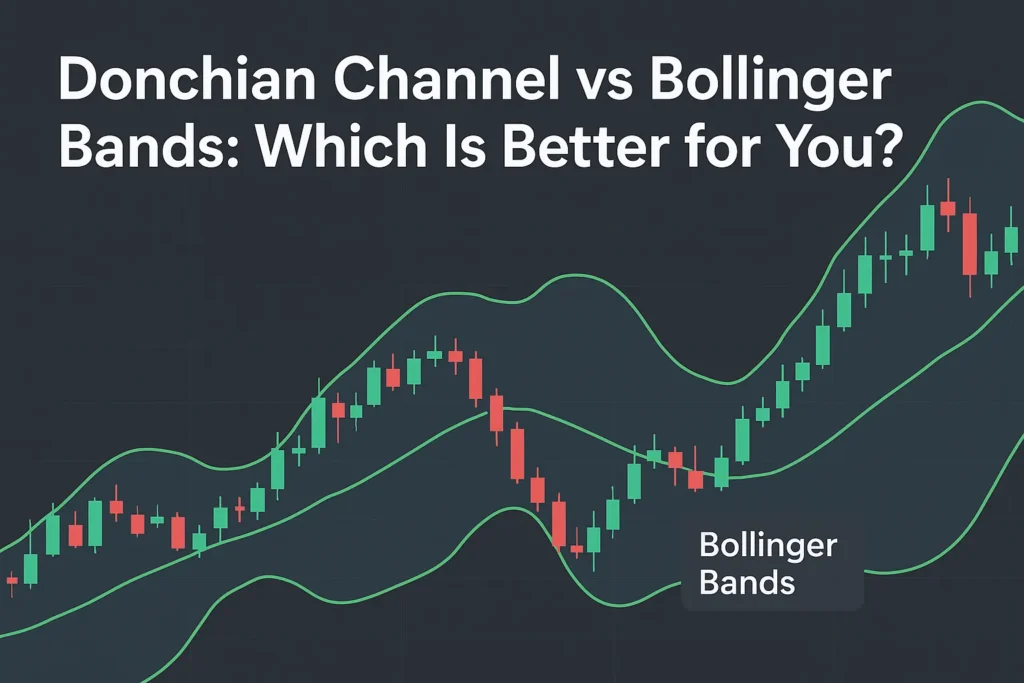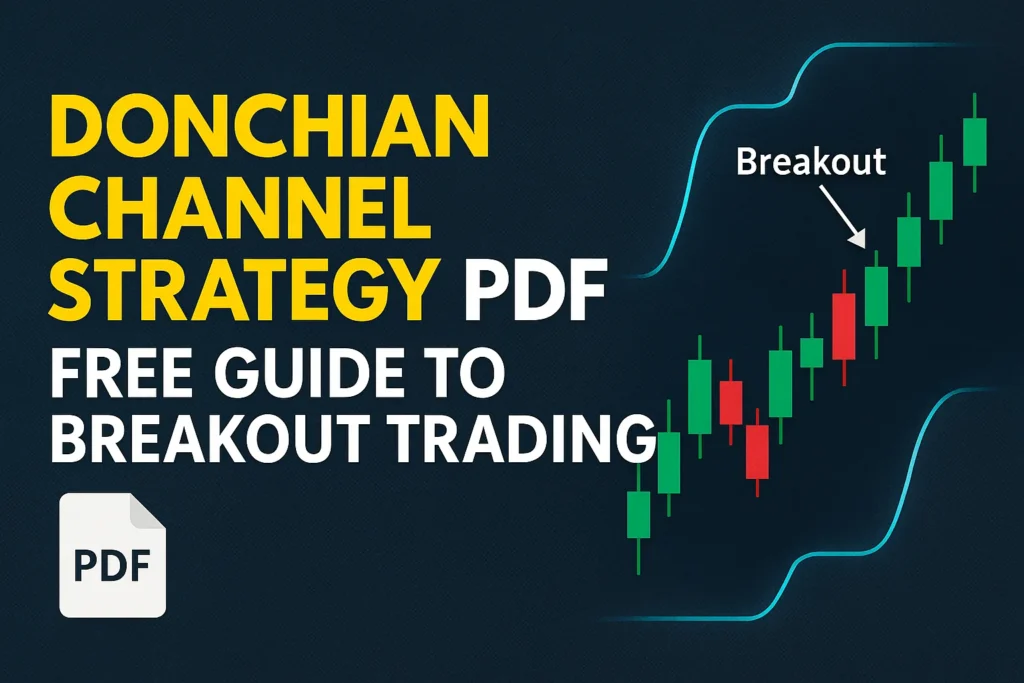Donchian Channel vs Keltner Channel: Key Differences Explained
Technical traders often rely on channel indicators to identify breakouts, trends, and volatility. Two popular tools are the Donchian Channel and the Keltner Channel. While they may look similar on a chart, they are built differently and serve unique purposes.
In this post, we’ll break down the differences between the Donchian Channel and Keltner Channel so you can decide which one fits your trading style best.
What Is the Donchian Channel?
The Donchian Channel plots the highest high and lowest low over a set number of periods—often 20.
- Upper Band: Highest high of the last n periods
- Lower Band: Lowest low of the last n periods
- Middle Band: Average of upper and lower
Best used for: Breakout and trend-following strategies.
What Is the Keltner Channel?
The Keltner Channel uses a moving average and the Average True Range (ATR) to plot its bands.
- Middle Band: Exponential Moving Average (usually 20 EMA)
- Upper Band: EMA + (Multiplier × ATR)
- Lower Band: EMA – (Multiplier × ATR)
Best used for: Volatility-based trend and mean reversion strategies.
Donchian vs Keltner: Side-by-Side Comparison
| Feature | Donchian Channel | Keltner Channel |
|---|---|---|
| Calculation Basis | Highest high & lowest low | EMA and ATR (volatility) |
| Indicator Type | Range-based | Volatility-adjusted |
| Best For | Breakouts and trend following | Smooth trends and pullbacks |
| Signal Timing | Faster on breakout entry | Smoother signals, fewer false positives |
| Visual Appearance | Often jagged, reacts to price spikes | Smoother, adapts to price volatility |
When to Use Donchian Channel
- You trade breakouts
- You want to catch early trend moves
- You prefer clearly defined price levels
Example: Price closes above the upper band → long entry signal.
When to Use Keltner Channel
- You trade pullbacks or mean reversion
- You want smoother signals with volatility filters
- You use ATR-based strategies
Example: Price touches lower band → potential long entry with confirmation.
Can You Combine Donchian and Keltner Channels?
Yes! Using both can help confirm signals.
Example strategy:
- Donchian Channel signals breakout
- Keltner Channel confirms volatility environment
When both align, the trade setup has stronger confirmation.
Conclusion
While both indicators use channels, they are built for different strategies:
- Use Donchian Channel if you focus on breakouts and want clean price-based levels.
- Use Keltner Channel if you prefer smoother signals and use volatility filters in your analysis.
Try both in a demo account and observe how they behave in different market conditions.
FAQs
Q1: Which channel reacts faster to price movement?
Donchian reacts faster, especially during breakouts. Keltner is smoother and slower.
Q2: Can I use both on the same chart?
Yes. Many traders overlay both to compare price position and signal confirmation.
Q3: Do both channels work in all markets?
Yes. Both can be applied to stocks, forex, crypto, and commodities.
Q4: Which is better for swing trading?
Keltner is often preferred for swing trading due to its smooth appearance.
Q5: Is the Donchian Channel more suitable for intraday trading?
Yes. Its responsiveness makes it great for identifying intraday breakouts.




